*NURSING > EXAM > AGNP BOARD EXAM QUESTIONS Pediatrics Assessment.South University, Savannah NSG 6320 . Pediatrics Ass (All)
AGNP BOARD EXAM QUESTIONS Pediatrics Assessment.South University, Savannah NSG 6320 . Pediatrics Assessment (127 Questions).
Document Content and Description Below
AGNP BOARD EXAM QUESTIONS Pediatrics Assessment (127 Questions) Question: A child sustained a "full-thickness" burn injury. This type injury involves tissue destruction down to the: epidermis. de... rmis. subcutaneous tissue. Correct internal organs. Explanation: A full-thickness burn involves all skin layers, including the epidermis, dermis, and the subcutaneous tissue and fat. Muscles and tendons may be involved. A superficial thickness burn involves the epidermis only. A superficial partial thickness burn involves the epidermis and the dermis. A deep thickness burn involves the entire layer of dermis, and is more severe than a superficial partial thickness burn. Question: A child was involved in a vehicular accident and sustained burns on the lower extremities. Examination reveals a dry, waxy, whitish appearance of both lower legs and some visualization of the tibialis anterior. This type of burn would be classified as a: superficial thickness burn. superficial partial thickness burn. deep partial thickness burn. full thickness burn. Correct Explanation: Types of burn injuries are chemical, electric, radiation, or thermal and are classified by the depth of damaged skin it caused. Full thickness burns involve the destruction of all skin elements with coagulation of subdermal plexus, muscle, and or tendons. Symptoms of superficial partial thickness burns include: moist areas that are red to ivory white in color, blisters forming almost immediately, and painful to touch. Since the pain receptors are intact, pain is perceived. Superficial thickness burns appear erythematous without blisters and usually have local pain. Deep partial thickness burns have a dry waxy, whitish appearance and resemble full thickness burns. Sometimes grafts are needed. Question: The earliest recognizable clinical manifestation(s) of cystic fibrosis in an infant is: History of poor intestinal absorption Foul smelling, frothy, greasy stools Meconium ileus Salty taste on the skin Correct [Show More]
Last updated: 2 years ago
Preview 1 out of 42 pages

Buy this document to get the full access instantly
Instant Download Access after purchase
Buy NowInstant download
We Accept:

Reviews( 0 )
$15.00
Can't find what you want? Try our AI powered Search
Document information
Connected school, study & course
About the document
Uploaded On
Apr 01, 2022
Number of pages
42
Written in
Additional information
This document has been written for:
Uploaded
Apr 01, 2022
Downloads
0
Views
138


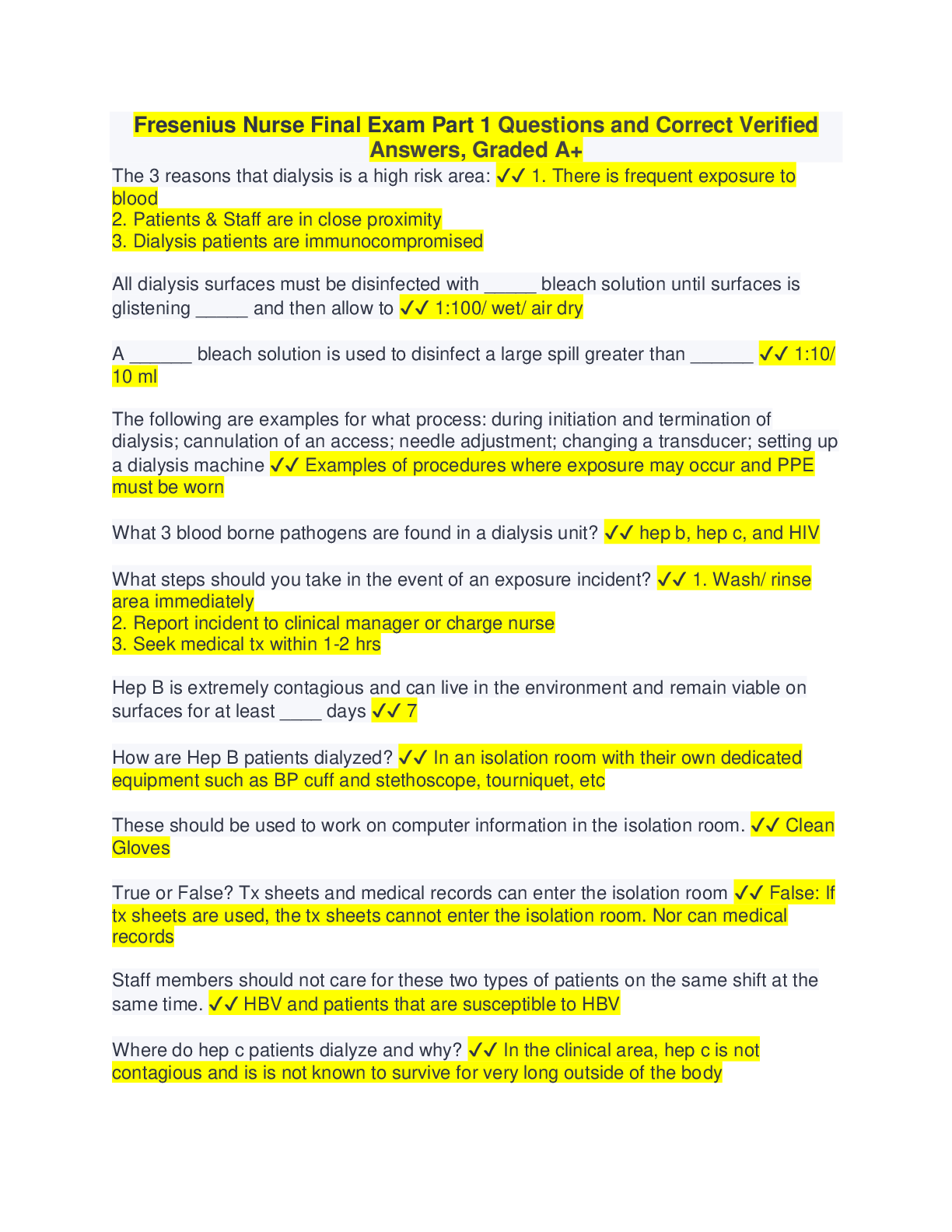
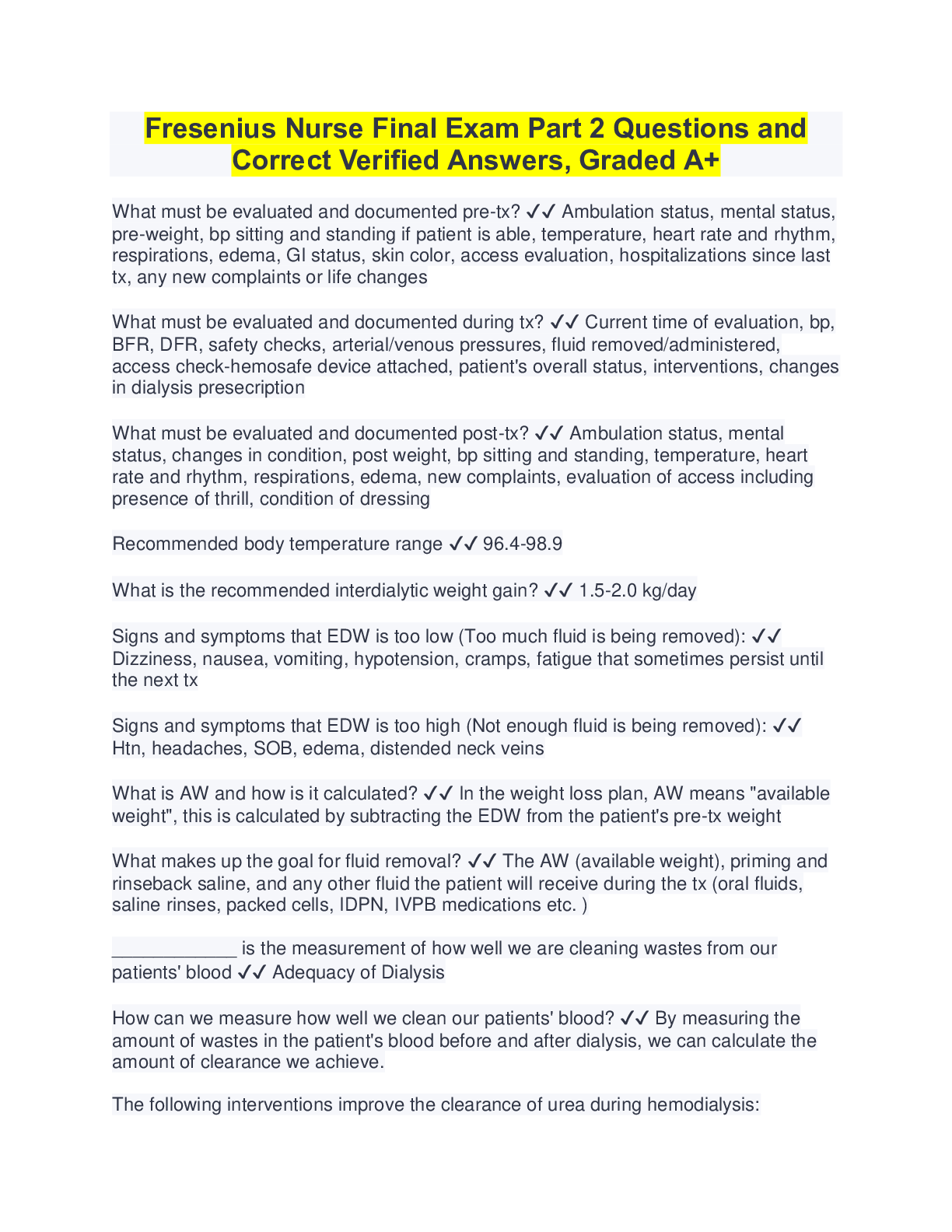
.png)



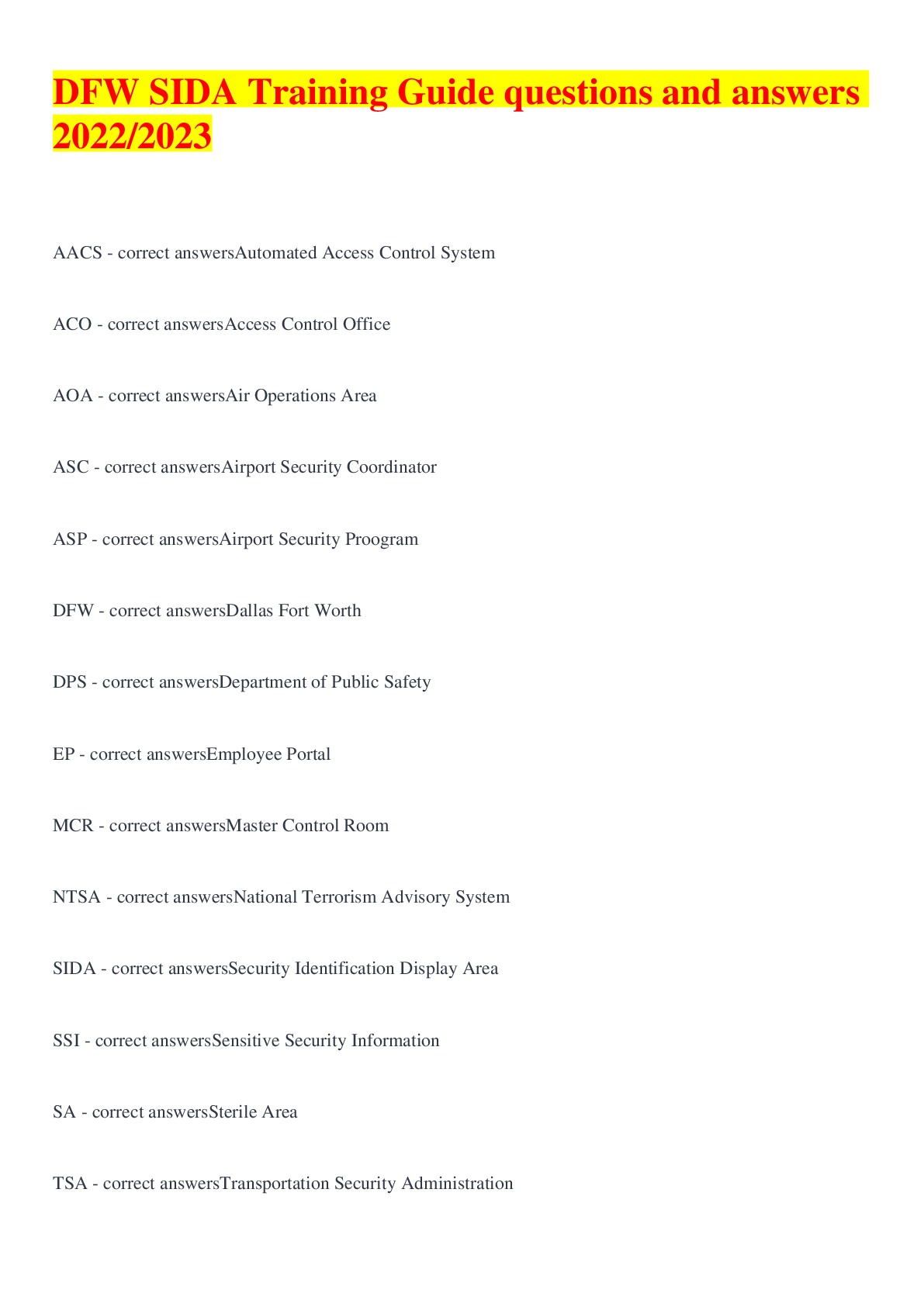
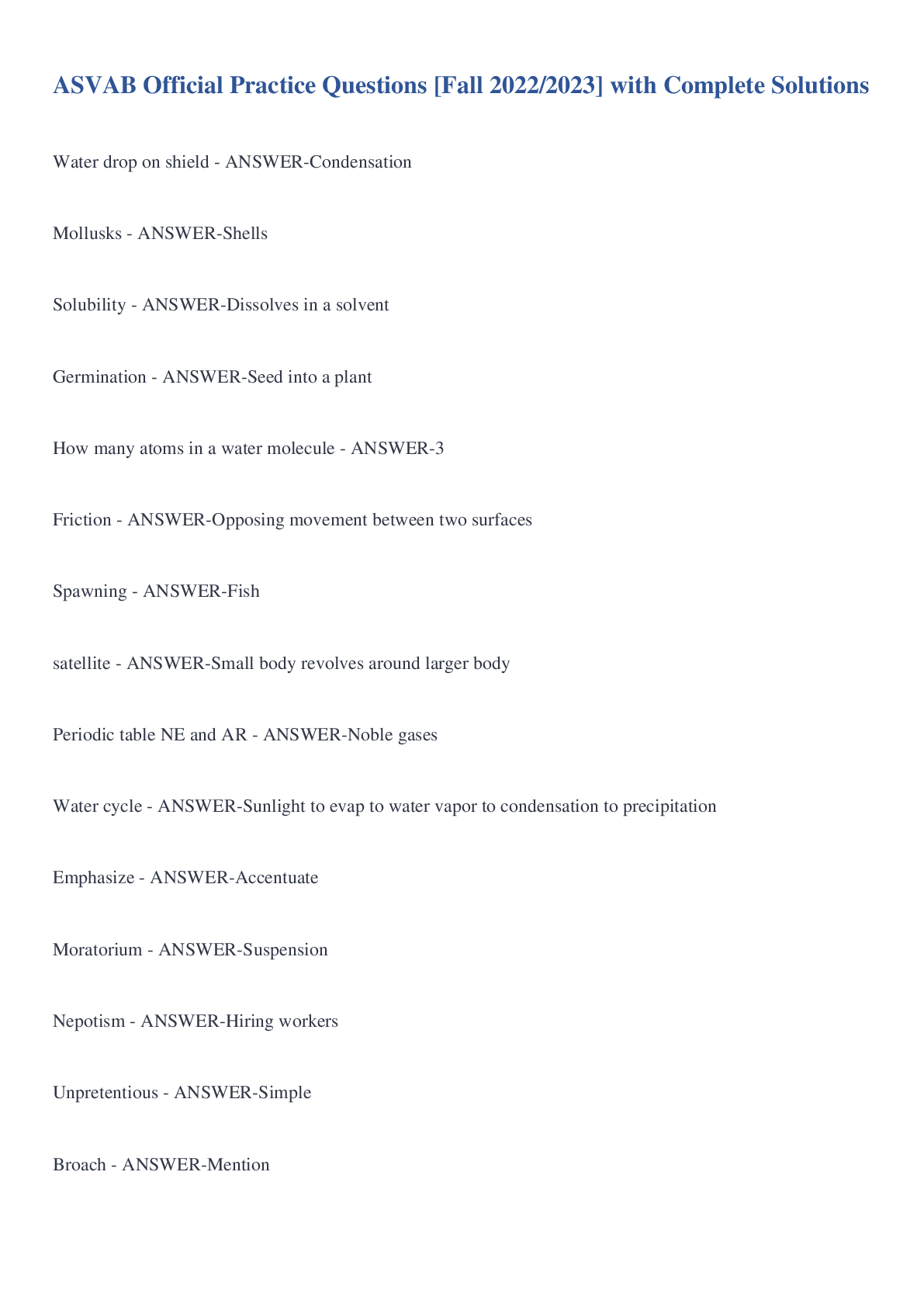
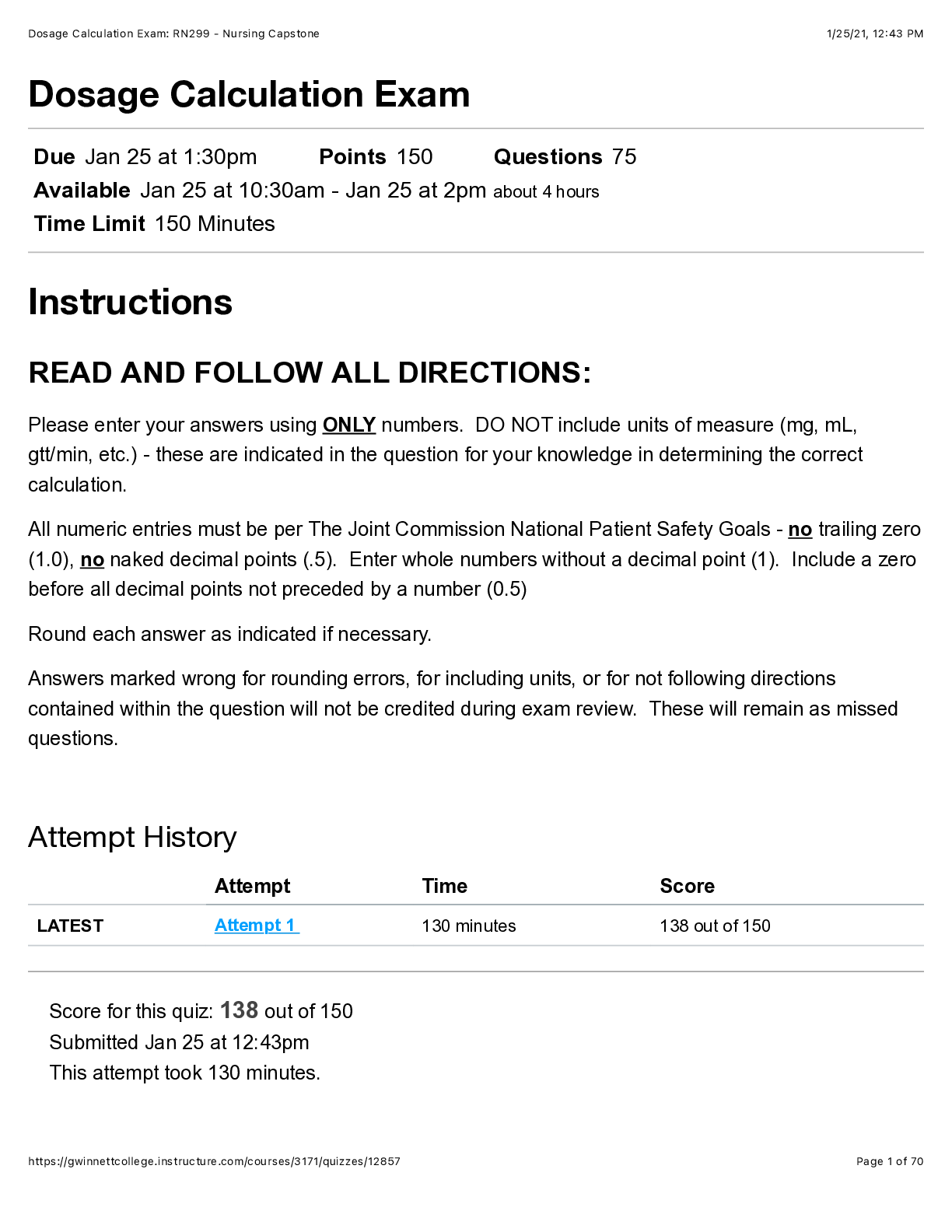


 Pediatrics Assessment (127 Questions) – South University Savannah.png)

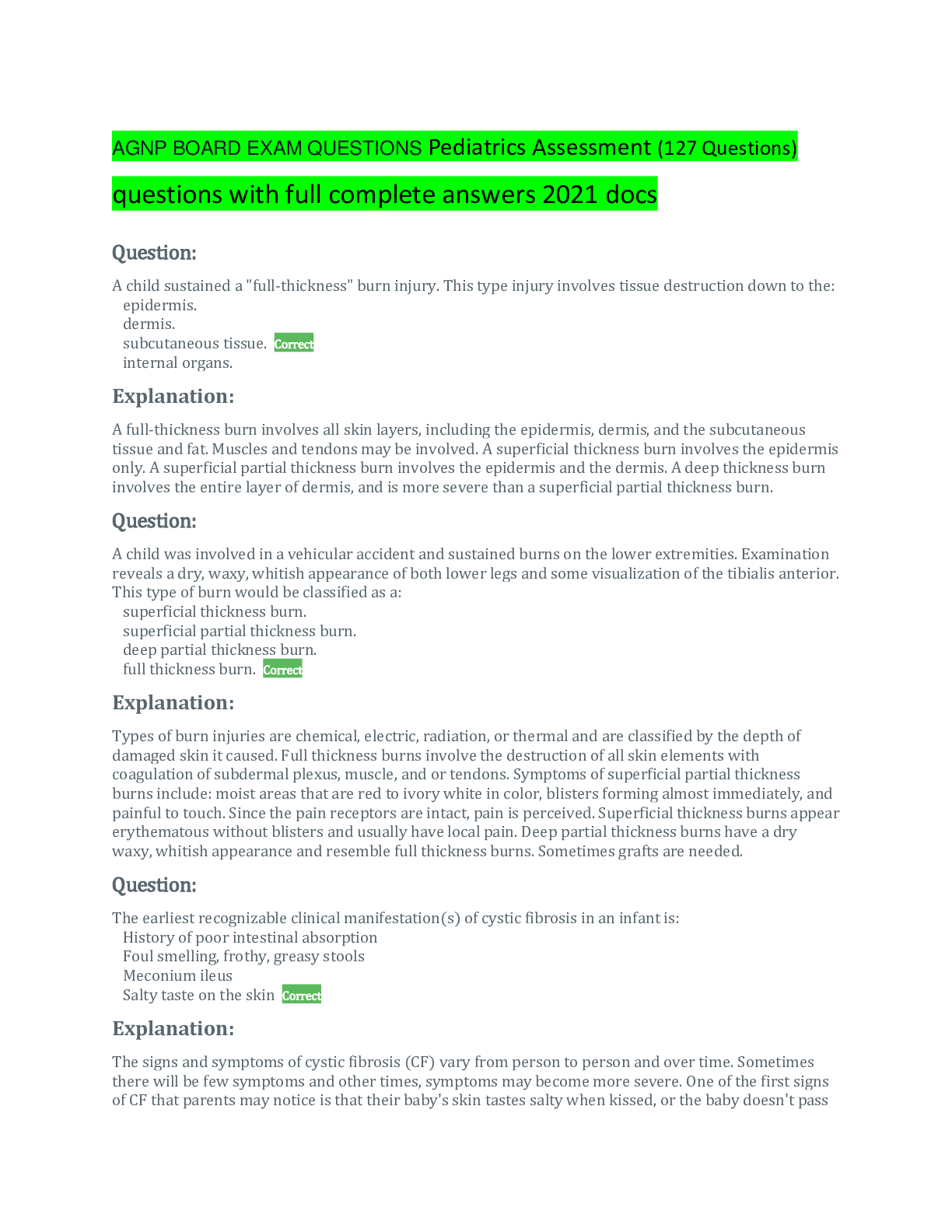
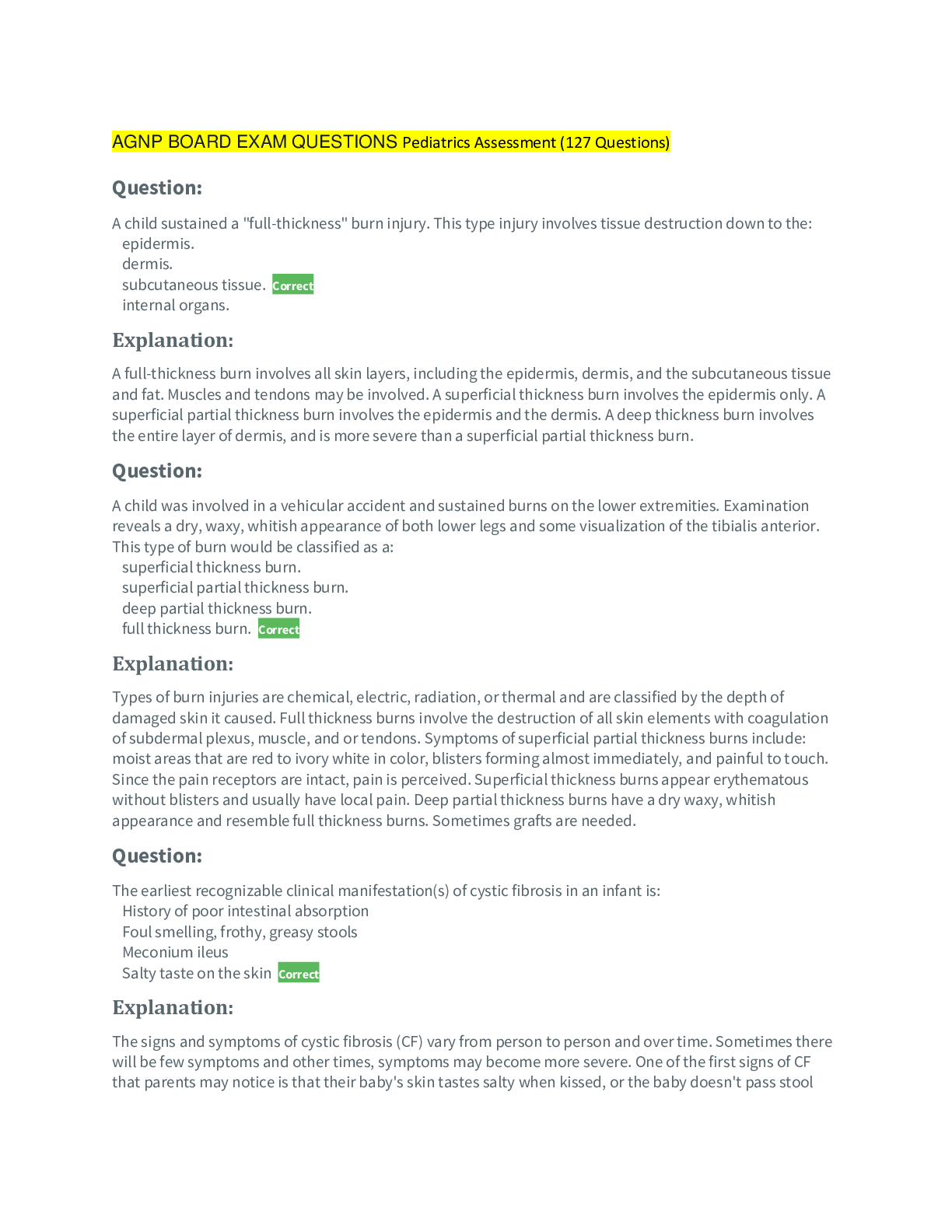
 - South University.png)

